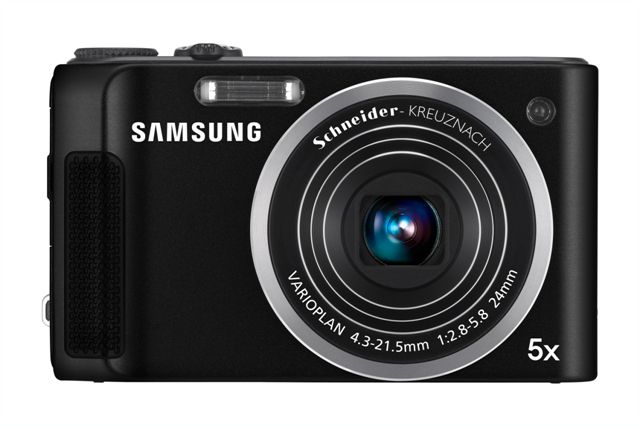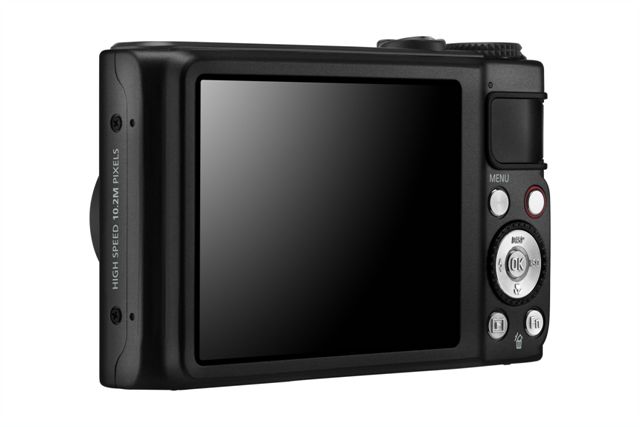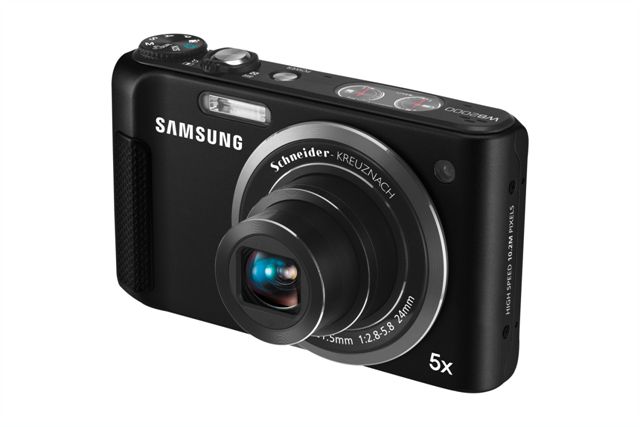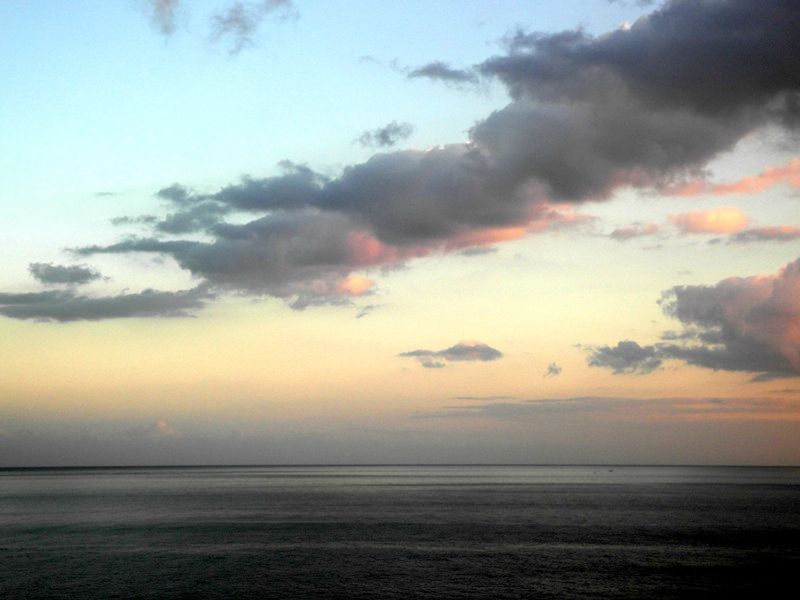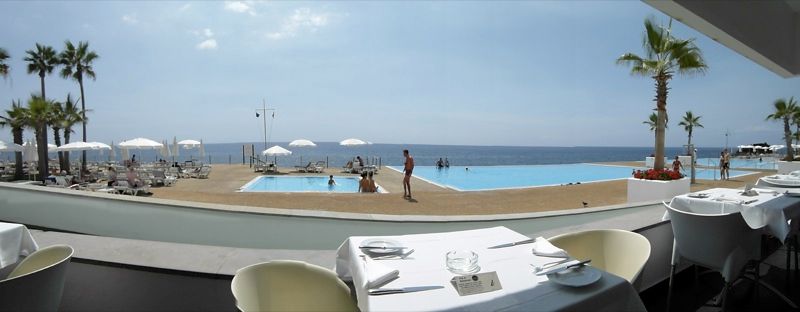It would be easy to mistakenly dismiss this new 10-effective-megapixel, 5x optical zoom (24-120mm equivalent in 25mm terms) model from Samsung as “just another” premium priced compact, and indeed it has arrived with a distinct lack of trumpets blaring.
Our quick take
For the privilege of owning a WB2000 Samsung was asking a high sounding £330 at the time of writing. That said a brief search online and we were able to discover the camera for a more realistic and enticing £260.
Though images aren’t completely perfect straight out of the camera - and so the WB2000 would suit those who do actually want to shoot in RAW and tweak results to the nth degree - perhaps its biggest bugbear is battery life. Or rather lack of it. We managed around 140 shots and a couple of short video bursts before our review sample suddenly gave up the ghost without sufficient power retained to even turn the thing back on.
Nevertheless, as a competitor to the likes of the Sony TX7 and Fuji F300EXR, it remains quick to get to grips with and capable of taking some cracking shots - outdoors at least.
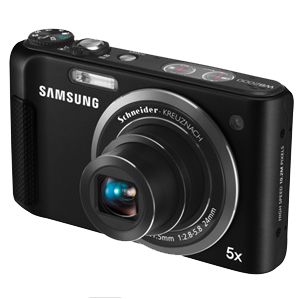
Samsung WB2000 - 4.0 / 5
| FOR | AGAINST |
|---|---|
|
|
From the front it resembles your typical black liveried boxy offering. Dimensions are a just-larger-than-credit-card sized 99.5 x 59 x 21.7mm, and it weighs a manageable 153g. But at the back it is a different story, the WB2000 incorporating an impressively sharp and clear 3-inch AMOLED (as opposed to standard LCD) screen. Improved brightness and contrast is the result, imbuing on-screen images with life-like depth. You can almost reach out and prod them, though this isn’t the touchscreen model it might have been.
Inevitably such in-camera vividness results in a slight twinge of disappointment once you’ve downloaded the images to your desktop as they often appear a little flatter and softer up large. So to get a degree of visual punch back, pictures benefit from brightness and contrast being quickly tweaked in Photoshop.
Press the power button recessed into the WB2000’s top plate and you’re ready to capture the first shot in around 2 seconds, stubby lens extending outward from within the body to maximum wideangle setting. There’s not much in the way of a handgrip, but there is a rubber pad to the right-hand side of the front (holding the camera in your right hand) providing some purchase for the fingertips when shooting handheld. Response times are good for its class, the camera determining focus and exposure in a second or so. Auto focus point/points are highlighted in green coupled with a beep of confirmation.
A lever for adjusting the zoom ergonomically surrounds the shutter release button - the zoom takes just over 2 seconds to steadily slope from extreme wideangle to maximum telephoto setting - while to its right is a regular shooting mode wheel, its ridged edging aiding grip and its rigidity preventing accidental slips to adjacent settings.
Spin this dial and a virtual version appears on screen. Here we find program, aperture priority, shutter priority and manual modes, along with dual image stabilisation to prevent blur resulting from camera shake in lower light and at the extremities of the zoom. For those preferring to get more hands on, a manually selectable light sensitivity range stretching from ISO 80 to ISO 3200 is accessible to suit differing lighting conditions. Completing the shooting options around the dial are subject-optimised scene and a dedicated video setting.
A brief sentence explaining the purpose of each function appears at the bottom of the screen for each subsequent setting – it is large enough to be legible whilst small enough not to distract more seasoned users from the job in hand.
But the (second) most eye catching feature of the WB2000’s top plate is two “Full and Empty” fuel gauge-type dials set into it; one showing remaining battery power, the other capacity of whichever optional SD or SDHC card has been inserted into the compartment shared with the supplied rechargeable battery at its base. You’ll either love or hate this distinctly retro analogue feature. As it makes the camera further different from the herd, we’ll go with the former feeling.
Although you can shoot JPEG, with writing times of just over a second, the Samsung WB2000 further surprises by offering RAW capture as well - if selecting a creative setting other than Smart Auto shooting mode - though you’ll have to wait just over 5 seconds for the larger file sizes to write. And not only can standalone RAW files be captured, there’s a chance to shoot them in tandem with JPEGs and at all three JPEG compression levels offered (Super Fine, Fine and Normal), which is more rare still.
The camera comes with all the expected bells and whistles too. We get Full HD resolution video, with a dedicated one-touch record button at the back and mini HDMI output at the camera’s side, along with the chance to push this from default 30 frames per second up to 1000fps. The result when played back is extreme slow motion footage that makes subjects appear as if wading through glue, should you want that. It also competes with the Casio Exilim compacts of this world (but doesn't quite come close) by further offering 10fps stills capture.
The full extent of the zoom can be used when shooting video - although there is some audible motor noise it is very, very low - and even if sound is mono only, that can be forgiven. A press of the camcorder-like record button at the back commences filming whichever alternative stills mode you might have the camera set to, though there’s a slight delay whilst the video mode kicks in and recording commences that could perhaps be further refined.
Slightly more gimmicky, but imparting a wow factor of its own none the less, is a panoramic mode that much like the intelligent Sweep Panorama functionality latterly found on Sony Cyber-shots, produces a single elongated image when the user pans with the camera in an arc. No need to take three or more separate images yourself following over-lapping guides on-screen, nor do your own processing. Though in our supplied test sample there’s a bit of double exposure, the results are effective none the less.
And so it comes to images taken in the Samsung WB2000’s default settings. Colours are realistic rather than over-saturated though there is a tendency for the camera to lose detail in the highlights. As we’ve noted, images are not quite as crisp as they appear on screen - especially when shooting at maximum telephoto - and require a modest amount of editing to bring out their best. Though Samsung hasn’t overburdened its CMOS sensor with pixels - sticking at 10.6MP rather than pushing for 14MP - images are nevertheless noisy at ISO 800 and above. The same could be said for most point and shot compacts of course, but for the price we’d dared to hope for slightly better.
To recap
Samsung has packed a lot in to this initially unassuming point and shoot, but it commands a slight premium as a result. The extra outlay can be partly justified by the brighter AMOLED screen, RAW and JPEG capture options, plus neat functionality; including one touch Full HD video recording and seamless panoramic shooting

